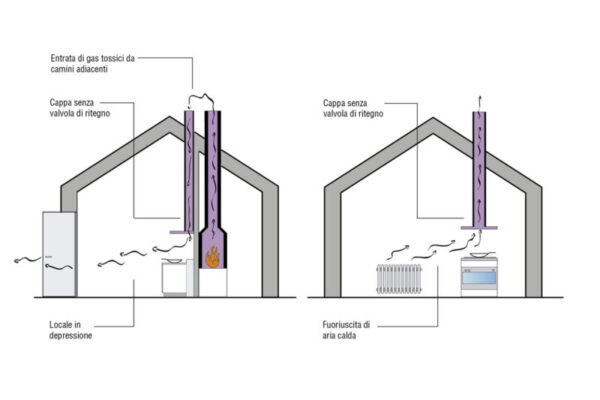Toxic Emissions Monitoring

Monitoring toxic gas
The air we breathe in our kitchen can become polluted by the toxic emissions from the stains and glues used to make furniture. At Valcucine, we do sample testing to make sure that our kitchen cabinet components do not release volatile substances into the air that can damage your health. We also check to be sure that our products are not contaminated with artificial radioactivity, respecting most restrictive standards of formaldehyde emissions.
Artificial radioactivity
Nuclear disasters like Chernobyl create artificial radioactivity that is absorbed by plants (and therefore wood) and then released into the atmosphere even after long periods of time. Since the quantity of toxic presence varies according to the lumber’s place of origin, Valcucine does sample testing to make sure that the wood it uses does not come from areas severely polluted by radioactivity.
Formaldehyde
Chipboard panels contain ureic glue, a substance that emits formaldehyde continuously for years. Even though it is now known to be carcinogenic. Regardless of the fact that Italy and many other countries set no standards for levels of formaldehyde emissions, Valcucine builds there products to meet stringent Japanes standards for emissions called F(4 stars). Invitrum base units are completely free.
Synthetic paints
Even long after we buy it, furniture treated with synthetic paints give off volatile toxic substances in our homes. Valcucine does special testing to analyze the pollution caused by these substances. This table shows the amounts and types of volatile organic substances in a 1 m2 surface painted with acrylic products diluted with synthetic thinners. In our continuous effort to avoid emission of toxic substances from synthetic solvents, we have developed a paint cycle where solvents were substituted with water.We have also created a natural oil- and wax-based surface finish with orange-peel oil extract solvent.
Water-based paint
One of the most serious pollution problems in cabinet making is the evaporation of the synthetic paint solvents. A medium-sized furniture maker releases tons of solvents into the air every day, polluting the area around it. Micro-evaporation of these solvents continues afterwards for even longer periods, polluting the area where the piece of furniture is located. To the full advantage of the end user, of operators in the furniture sector and of the villages that surround the factories, Valcucine, after years of tests and of continuous research, has adopted, for solid wood and for veneered doors and panels, a cycle of water-based varnish that drastically reduces toxic emissions. Our innovative capacity continues to pave the way for improvement in the industry. We have been pleased to see some of our competitors adopt similar practices. As the saying goes, “imitation is the sincerest form of flattery. At Valcucine we are eager to see all industry work for an improvement in our environment and health.